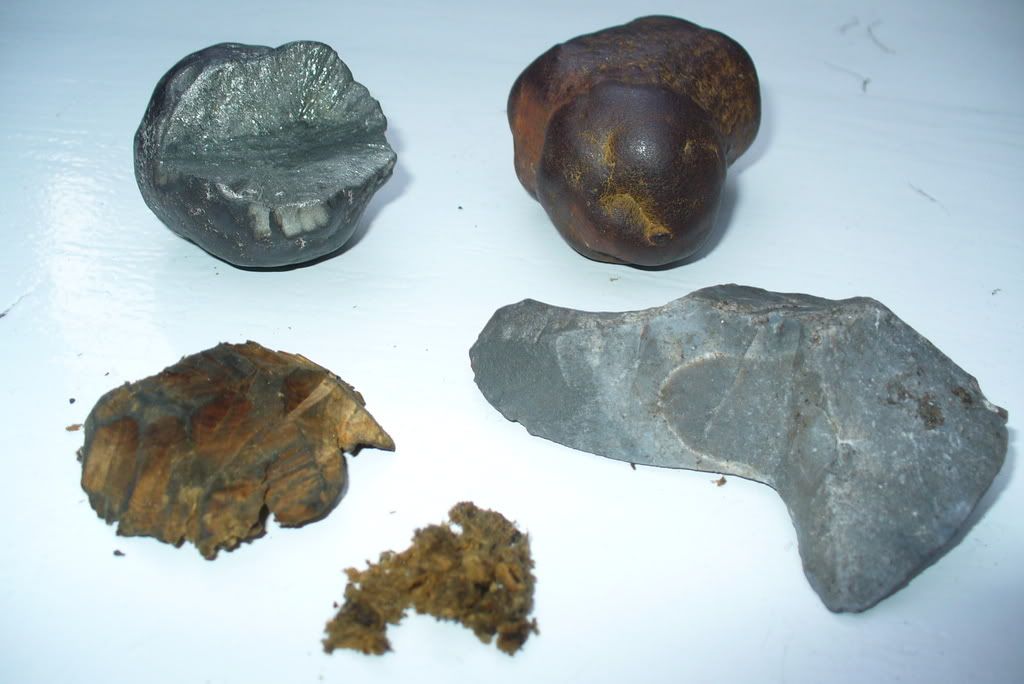
2 pieces of marcasite, Fomes fomentarius tinder (whole & scraped into a woolly mass) and a piece of flint.
Here's some pictures of marcasite and flint firestarting:
http://s162.photobucket.com/albums/t258/galemys/Marcasite firestarting/
The marcasite is not really hit as in flint and steel, it is more a scraping motion, using the thumb to add pressure (not clear in the picture because I needed one hand to take the picture). A long, pointed piece of flint will therefore work better than a smaller one. Once in a few scrapes a spark is produced, if it takes too long, the tinder will slowly be covered in marcasite dust and harder to reach for a spark.
Cheers,
Tom

